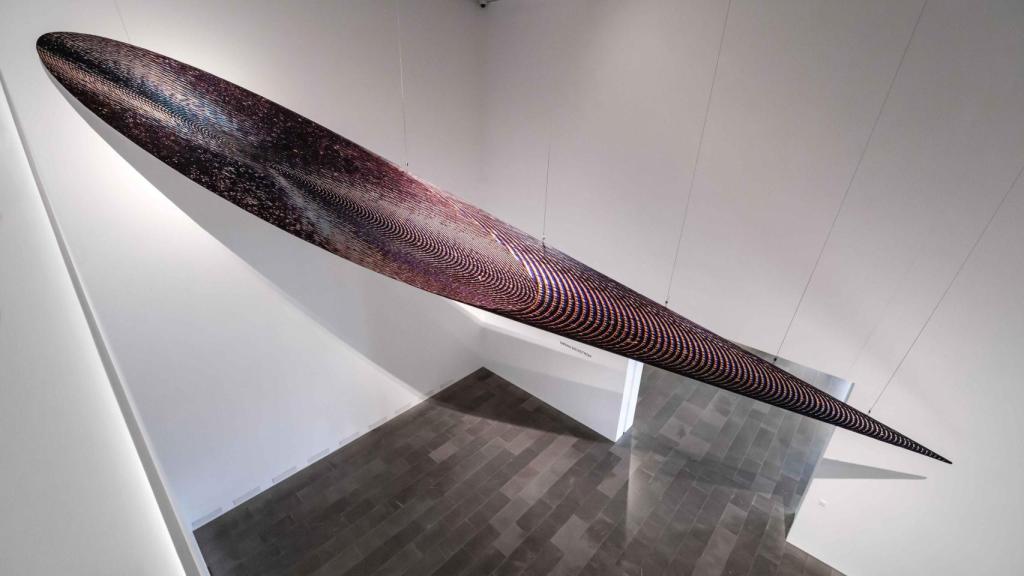It’s photography. It is sculpture. It is textile art. It’s an unidentified flying object straight out of the imagination of Stanley Kubrick or Ridley Scott, spaceships beyond Orion, C-rays glowing in the dark near the Tannhäuser Gate. Miriam Bäckström (Stockholm, 1967) is all this and nothing at the same time. A object that becomes an image that finally becomes an object.
Let’s try to make sense of all this. His post-photographic work goes beyond a camera shot. It all starts by photographing a tiny fragment of fabric with a macro lens. The resulting image is converted into a weave and this is woven in silk, lurex and jacquard.
Then this fabric becomes skin in new ways, 3D modeled geometries whose skeleton is made of wood. Technology and craftsmanshiptradition and contemporaneity working together. The result is not a photograph glued to a volume, but an image that becomes matter.
Bäckström declines photography as open source. Hence, his works blur the borders between techniques: when the textile becomes an image and the image becomes a volume, the taxonomies dissolve. Elba Benítez hosts few but emphatic pieces, only four. one of them Advanced Cone (2019) looks like a ten-meter alien object.
Pieces that are at the same time raster, pixel and skin: They are reminiscent of heat shields or armor plates seen by the camera of a space probe. It is not illustrative science fiction, but poetic engineering.

Miriam Bäckstörm: ‘Advance cone’, 2019. Photo: Elba Beníez
His trajectory is coherent. Born in Stockholm in 1967, she began to stand out in the nineties through conceptual photography. His work consisted of photographing interior spaces such as apartments, restaurants and galleries, with great technical precision and without explicit human presence, but evoking their imprint as if they were settings in search of characters.
Over time, these sets took her towards the theatre, cinema, performance and, more recently, textile art. He does not abandon the photographic, he stretches it – extends it – until it acts as sculpture and architecture.
Bäckström represented Sweden at the 2005 Venice Biennale (along with Carsten Höller) and has made tapestries for the Swedish royal house (Palace of Frederick VIII, official residence of the Danish royal family), public spaces and museums, and his work appears in collections such as Tate, Guggenheim, MoMA, or Moderna Museet.
That, and nothing else, is the postphotographygo beyond the shot, be able to transform language. Bäckström’s “extensions,” as the title of the exhibition says, – the artist’s fourth in the gallery – are optical and haptic, tactile and visual, spatial and mental.
His works envelop the viewer in a hypnotic plot like the moiré of a fabric or the snow on an untuned television screen. When we move, our brain reads the plot as if it were in motion; when surrounding the pieces, the shine It turns on and off as if the fabric were breathing.
Without grandiloquence, but from monumentality, Bäckström works different stories about our way of looking at the world, from the micro to the macro, from the insignificant to the infinity in a extraordinary translation exercise.
The post Miriam Bäckström, fabric that is sculpture, that is photography: extraterrestrial art in Madrid appeared first on Veritas News.
